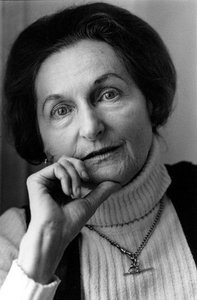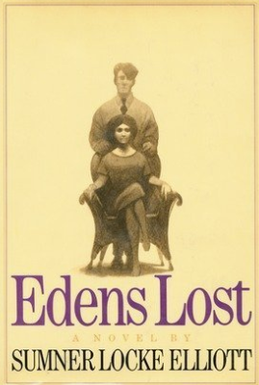
Timothy John Winton is an Australian writer. He has written novels, children's books, non-fiction books, and short stories. In 1997, he was named a Living Treasure by the National Trust of Australia, and has won the Miles Franklin Award four times.
Jennifer June Rowe,, is an Australian author. Her crime fiction for adults is published under her own name, while her children's fiction is published under the pseudonyms Emily Rodda and Mary-Anne Dickinson.
Carmelina Marchetta is an Australian writer and teacher. Marchetta is best known as the author of teen novels, Looking for Alibrandi, Saving Francesca and On the Jellicoe Road. She has twice been awarded the CBCA Children's Book of the Year Award: Older Readers, in 1993 and 2004. For Jellicoe Road she won the 2009 Michael L. Printz Award from the American Library Association, recognizing the year's best book for young adults.

Jacqueline Anne French , known professionally as Jackie French, is an Australian author who has written across several genres for both adults and children. Her most notable works include Rain Stones, Diary of a Wombat,, The Girl from Snowy River and Hitler's Daughter. Several of her books have been recommended for teaching the Australian Curriculum. French lives in Braidwood, New South Wales, with her second husband Bryan Sullivan.

Seven Little Australians is a classic Australian children's literature novel by Ethel Turner, published in 1894. Set mainly in Sydney in the 1880s, it relates the adventures of the seven mischievous Woolcot children, their stern army father Captain Woolcot, and faithful young stepmother Esther.

Looking for Alibrandi is the debut novel of Australian author Melina Marchetta, published in 1992. A film adaptation of the same name was made in 2000.

Jessica Margaret Anderson was an Australian novelist and short story writer. Born in Gayndah, Anderson lived the bulk of her life in Sydney apart from a few years in London. She began her career writing short stories for newspapers and drama scripts for radio, especially adaptations of well-known novels. Embarking on her career as a novelist relatively late in life - her first novel was published when she was 47 - her early novels attracted little attention. She rose to prominence upon the publication of her fourth novel, Tirra Lirra by the River, published in 1978. Although she remains best known for this work, several of her novels have garnered high acclaim, most notably The Impersonators (1980) and Stories from the Warm Zone and Sydney Stories (1987), both of which have won awards. She won the Miles Franklin Literary Award twice, and has been published in Britain and the United States. Jessica Anderson died at Elizabeth Bay, New South Wales in 2010, following a stroke. She was the mother of Australian screenwriter Laura Jones, her only child.

Elizabeth Helen Hathorn is an Australian writer for children, and a poet who works with schools, institutions and communities. She has received many awards for her books, some of which have been translated into several languages. In 2001 she was awarded a Centenary Medal for her contribution to children's theatre. In 2014 she was awarded the Alice Award for her contribution to Australian literature. In 2017 she won the Asher Peace Prize and in 2022 the ABIA Pixie O'Harris Award for excellence and dedication to children's literature.
Hesba Fay Brinsmead was an Australian author of children's books and an environmentalist.
Catherine Bateson is an Australian writer.

Nadia Wheatley is an Australian writer whose work includes picture books, novels, biography and history. Perhaps best known for her classic picture book My Place, the author's biography of Charmian Clift was described by critic Peter Craven as 'one of the greatest Australian biographies'. Another book by Wheatley is A Banner Bold, a historical novel.
Berlie Doherty is an English novelist, poet, playwright and screenwriter. She is best known for children's books, for which she has twice won the Carnegie Medal. She has also written novels for adults, plays for theatre and radio, television series and libretti for children's opera.
Jasper Jones, is a 2009 novel by Australian writer Craig Silvey. It has won and been shortlisted for several major awards including being shortlisted for the International Dublin Literary Award. The novel was selected by the American Library Association as 'Best Fiction for Young Adults' in their 2012 list.
Emily Ballou is an Australian-American poet, novelist and screenwriter. Her poetry collection The Darwin Poems, a verse portrait of Charles Darwin, was published by University of Western Australia Press in 2009. It was written as part of an Australia Council for the Arts residency at the Tyrone Guthrie Centre in County Monaghan, Ireland.
Eleanor Katrine Witcombe was an Australian screenwriter and playwright who worked extensively in radio, film and television.
Barbara Mary Vernon was an Australian playwright, screenwriter, editor and radio announcer.

Edens Lost (1969) is a novel by Australian writer Sumner Locke Elliott.
Margaret Balderson is an Australian novelist and writer for children who was born in Concord, New South Wales in 1935. She won the 1969 Children's Book of the Year Award: Older Readers award for her debut novel When Jays Fly to Barbmo.
Cath Crowley is a young adult fiction author based in Melbourne, Australia. She has been shortlisted and received numerous literary awards including the 2011 Prime Minister's Literary Award for Young Adult Fiction for her novel Graffiti Moon and, in 2017, the Griffith University Young Adult Book Award at the Queensland Literary Awards for Words in Deep Blue.
Felicity Castagna is an Australian writer. She won the young adult fiction prize at the 2014 Prime Minister's Literary Awards for her book, The Incredible Here and Now and the 2022 Writing for Young Adults Victorian Premier's Literary Awards for her book, Girls in Boys' Cars.








